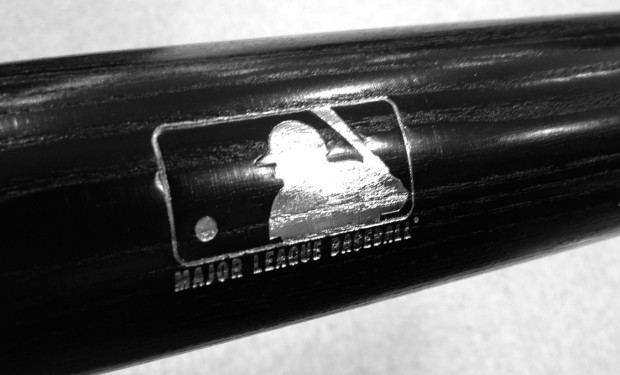Does Tort Liability have a Place in Baseball?
Nicolaus Mills, Professor of Literature at Sarah Lawrence College, recently wrote an opinion piece for CNN’s focusing on the dangers during baseball games, specifically that players at bat are often hit by incoming pitches. Mills recommended potential rule changes to the game of baseball after an incident early in the 2012 season. In the eighth inning of a game between the New York Yankees and Seattle Mariners on July 24, a pitch from the Mariners’ Felix Hernandez—who had already hit two batters during that inning alone—zeroed in on the Yankees’ Alex Rodriguez and hit his left hand. The pitch fractured Rodriguez’s left hand, and kept him out of the Yankees’ lineup for six weeks while the Yankees were fighting for a playoff spot.
Mills believed Rodriguez was lucky the injury was not more serious and that the baseball had not struck his head. Mills analogizes being hit in the head by a pitch to “helmet-to-helmet” hits in football. The National Football League (NFL) has been in the news recently, and not only for events on the field. Hundreds of former players are suing the league over the NFL’s alleged concealment of the dangers caused by concussions. To lessen future liability and to increase game safety, the NFL has introduced changes to protect its players. Mills believes this change is necessary in baseball as well, particularly to prevent players from suffering life-changing injuries after sustaining hits to the head. Mills lists four changes Major League Baseball should add to protect hitters.
First, batters hit above the chest should be awarded second base, enabling them to score on a single. Second, pitchers should be ejected after hitting two batters and fined $10,000. Third, if any of a team’s pitchers hit a batter, then any subsequent batter hit would lead to the automatic ejection of that pitcher, regardless of whether that particular pitcher had previously hit anyone. Finally, and most drastically, if a hit batsman must miss games due to injuries sustained in the incident, then the pitcher must sit out every game until the injured player is ready to return.
Aside from rules changes, should players who suffer pitch-related injuries have a potential remedy in tort law for damages? Although Major League Baseball players have brought no such lawsuits, it has been litigated in smaller-scale baseball leagues in several states. California has seen two lawsuits in the last fifteen years that could provide a layout applicable to any future lawsuits. Balthazor v. Little League Baseball, Inc., 62 Cal. App. 4th 47 (1998); Avila v. Citrus Cmty. Coll. Dist., 38 Cal. 4th 148 (2006).
In Balthazor, an 11-year-old was at bat in a little league game when he was struck in the face by a pitch. The child’s mother sued the local little league as well as the national little league organization. The trial court granted summary judgment for the defendants on the theory of primary assumption of risk. In California, if the risks inherent in the sport outweigh those faced by the players in deciding to play baseball, a defendant can rely on a theory of assumption of risk. However, according to the court, if instructors “increase the risk of harm inherent in a particular sport, the instructor may not thereafter rely on primary assumption of risk.” The appellate court in Balthazor affirmed the trial court holding, finding that the plaintiff’s injury resulted from an inherent risk of playing baseball and that the defendants did not do anything that would have increased the risks of the players.
Several years later, the California Supreme Court dealt with a similar case. In Avila, a community college baseball player was hit in the head by a pitch during a preseason game. The California Supreme Court agreed with the lower California court’s ruling in Balthazor that the theory of primary assumption of risk protected the school district from liability as the school district had done nothing to increase the inherent risks of baseball.
While the Court did not decide whether the plaintiff was intentionally hit in the game, the Court acknowledged that participants do not assume the risk of others’ reckless or intentional conduct, which is beyond that of normal activity in the sport. However, even if the pitcher in Avila had intentionally hit the plaintiff, that conduct would not have fallen outside the realm of normal baseball activity because being hit by a pitch is an inherent risk of the sport. Although intentionally throwing a baseball at a batter is against the rules of the sport, the Court held that “imposition of legal liability for such conduct might well alter fundamentally the nature of the sport by deterring participants from vigorously engaging in activity that falls close to a prescribed rule.” It is well within the rules of the game for an umpire to eject a pitcher for intentionally throwing at a hitter, but according to the Court, “it is quite another for tort law to chill any pitcher from throwing inside . . . for fear of a suit over an errant pitch.”
These two cases would seem to answer the question posed above in the negative. For those up to bat, the theory of assumption of risk would insulate any potential defendants from having to pay damages. Being hit by a pitch is an inherent risk assumed by every player who steps up to the plate in a baseball game. Players may need to put their hope in Mills’ suggested rules if they want to seek relief from being seriously hurt by high and tight pitches.

